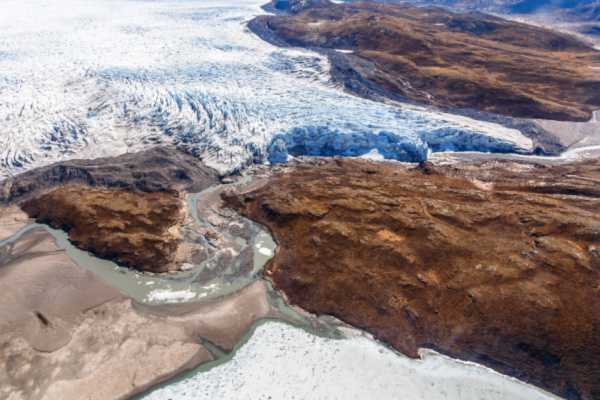As UPI reports, new research published in the Journal Nature shows extensive thinning of Greenland’s ice sheet and a speedup of the Northeast Greenland Ice Stream that drains glacier ice into the sea. The ice stream deterioration could raise sea levels by as much as 15.5mm (0.6 inch) – more than six times what scientists had previously estimated.
According to the research, the speedup of the NEGIS will cause sea level rise by 2100 equivalent to the contribution of the entire Greenland ice sheet over the past 50 years. “It’s not something that we expected,” said Shfaqat Abbas Khan, a glaciologist at the Technical University of Denmark in Kongens Lyngby. “Greenland and Antarctica’s contributions to sea level rise in the next 80 years will be significantly larger than we have predicted until now.”
The authors of the report said the NEGIS is a “main contributor of ice loss” and the research shows “extensive speedup and thinning triggered by frontal changes in 2012 have already propagated more than 200 km (124.2 miles) inland.”
“Over the past two decades, ice loss from the Greenland ice sheet has increased owing to enhanced surface melting and ice discharge to the ocean,” the research report said.
The NEGIS drains about 12% of the interior Greenland ice sheet through two fast-flowing outlet glaciers to the sea, the researchers said. Over the last decade it has been rapidly speeding up. The outlet glaciers are known as NG and ZI.
“After being almost stable from the late 1970s to the early 2000s, ZI entered a phase of retreat around 2004,” researchers wrote. “During the 2000s, ZI continued to retreat. A notable change occurred in 2012, when the ice shelf collapsed and the ice flow accelerated.”
The scientists said the continuously warmer air and ocean temperatures combined with a downward sloping marine-based bed have “led to destabilization that has continued throughout the 2010s into 2021.”
—
Photo Credit: Vadim_N / Shutterstock.com
